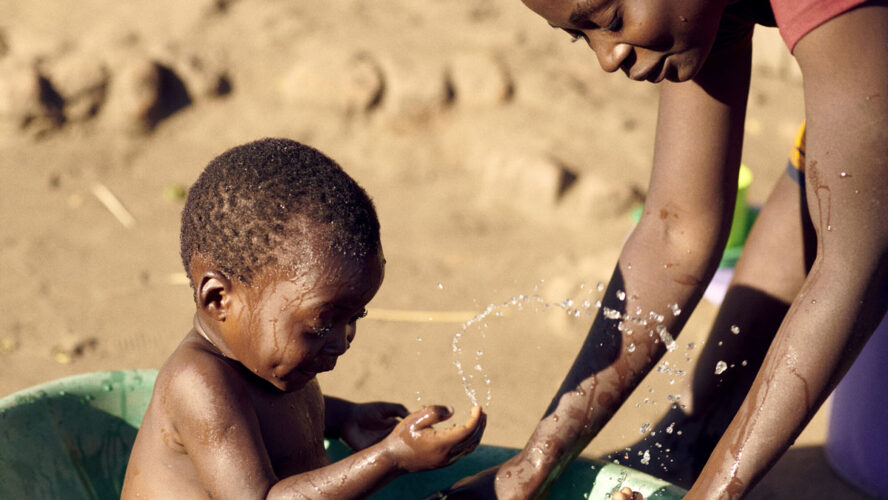
Irene Owusu-Poku
Health Policy Analyst, WaterAid
international group WaterAid offers ways to fast-track its prevention and control.
The global toll of a preventable disease
Cholera is a deadly diarrhoeal disease spread through ingesting contaminated food and water. Entirely preventable, it can kill within hours if a severe case is left untreated.
The World Health Organization estimates that each year, cholera affects upto 4 million people globally and causes as many as 143,000 deaths. But these figures fall far short of the true toll. Stigma, concerns over trade and tourism and weak surveillance systems mean many cases go unreported, leaving the full scale of the crisis hidden from view.
Sange’s experience: the devastating impact of cholera
Sange Mbilishi is a nurse and midwife at a hospital in Lusaka, Zambia. She recalls what it was like to treat patients during Zambia’s worst cholera epidemic last year.
“We had no option but to source nurses from other wards. Even midwives ended up being recruited into cholera medical tents to help. It was emotional because cholera is preventable and yet, we see a huge number of people dying. You become attached to these patients. You see somebody walking in and before you know it, they are gone.”
Cholera: a disease of vulnerability
“We were never told exactly what caused the cholera that took my grandmother, but I think it was from run-off water.” – Chifuniro, a young mother from Namizimbe in Malawi.
“Every death from cholera is a failure in providing basic water, sanitation and hygiene services,” says Irene Owusu-Poku, Health Policy Analyst at WaterAid. “It is a disease of vulnerability – thriving in places where people lack or have limited access to clean water and sanitation, where health systems are fragile and where shocks like drought and flooding displace entire communities.”
And yet, 411 million people in the world – 1 in 20 – have no choice but to drink dirty water.1
Repeated cholera outbreaks signal a chronic lack of investment in water, sanitation and hygiene, a failure to tackle the root cause of the disease and to meet the needs of people most affected by it. The burden falls disproportionately on communities in regions such as Africa, the Eastern Mediterranean and South-East Asia, where access to these basic services remains limited.
Women and girls are often at a greater risk of contracting the disease due to their roles as primary caregivers, cooks and water collectors.
Increasing water scarcity is making access to clean water harder for many communities. Extreme floods and prolonged droughts are damaging fragile water and sanitation systems, increasing the risk of outbreaks.
“Unless governments act now to improve water-sanitation and hygiene services, cholera will continue to threaten lives, particularly in the world’s most vulnerable places,” says Owusu-Poku. “Tackling this crisis requires not only infrastructure and investment, but also a commitment to addressing the needs of vulnerable populations.”
WaterAid’s global analysis: how to fast-track cholera prevention
According to WaterAid’s recent global political economy analysis, cholera is regularly given lower priority over other economic issues. Water, sanitation and hygiene services are treated as a secondary concern and cholera prevention remains reactive rather than strategic.
“And now reductions in assistance from numerous governments are worsening the cholera crisis, as it struggles for political attention and resources – much like many other pressing challenges.”
“Improving access to clean water in high-risk regions could halve cholera and other diarrhoeal disease cases and deaths—and save over a billion dollars,” says Owusu-Poku, citing findings from Southern Africa, including Malawi and Zambia.
This research underscores clear opportunities for action. “Nobody should lose their lives or loved ones to a disease that’s been eliminated in many parts of the world.”
Ending cholera means working
together – across health, water
and humanitarian sectors.
A simple solution
The suffering caused by cholera is needless. The disease can be stopped in its tracks – and sustainably prevented – through adequate investment in clean water, sanitation and hygiene services.
Focused investment in these essentials in cholera-affected areas is the best long-term way to stop the disease. It tackles the root causes of outbreaks and brings wider health and economic benefits – with each dollar spent generating an estimated tenfold benefit.
Estevão Manuel David, a general practitioner and the Director of the Etatara Health Unit in Mozambique shares his experience after running water was installed in his health unit for the first time. “During a cholera outbreak, access to water made a huge difference. Patients could wash their hands when they arrived, helping stop the disease from spreading. They didn’t take cholera back home with them. It really helped to break the cycle of transmission,” he said.
Making cholera a disease of the past
When cholera surges anywhere, it threatens to spread farther with no respect for national borders. World leaders have the power to eliminate the disease by prioritising the provision of clean water, decent toilets, and good hygiene services for all.
“WaterAid will continue to work with people, supporting communities to build and maintain water, sanitation and hygiene infrastructure. But governments must step up,” says Owusu-Poku. “Ending cholera means working together – across health, water and humanitarian sectors – with a coordinated, long-term plan and strong partnerships at every level. No one should die from a preventable disease.”
With universal access to clean water, sanitation, and hygiene, cholera can become a disease of the past – for everyone, everywhere.
Read the full report: https://washmatters.wateraid.org/publications/preventing-cholera
[1] WHO/UNICEF (2023). Progress on household drinking water, sanitation and hygiene 2000-2022: special focus on
gender. Available at: washdata.org/reports/jmp-2023-washhouseholds-launch (accessed 11 Jul 2023).



